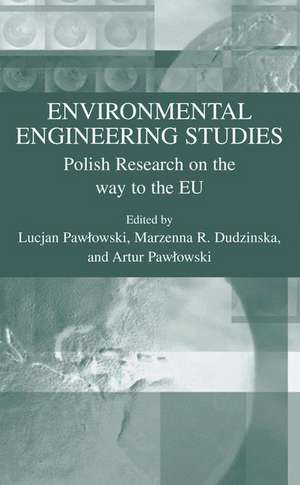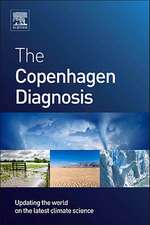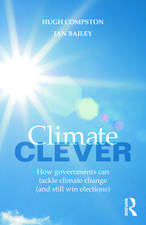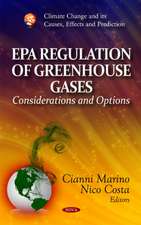Environmental Engineering Studies: Polish Research on the Way to the EU
Editat de Lucjan Pawlowski, Marzenna R. Dudzinska, Artur Pawlowskien Limba Engleză Hardback – 30 dec 2003
| Toate formatele și edițiile | Preț | Express |
|---|---|---|
| Paperback (1) | 952.72 lei 6-8 săpt. | |
| Springer Us – 22 oct 2012 | 952.72 lei 6-8 săpt. | |
| Hardback (1) | 966.78 lei 6-8 săpt. | |
| Springer Us – 30 dec 2003 | 966.78 lei 6-8 săpt. |
Preț: 966.78 lei
Preț vechi: 1178.99 lei
-18% Nou
Puncte Express: 1450
Preț estimativ în valută:
185.05€ • 201.08$ • 155.54£
185.05€ • 201.08$ • 155.54£
Carte tipărită la comandă
Livrare economică 21 aprilie-05 mai
Preluare comenzi: 021 569.72.76
Specificații
ISBN-13: 9780306481819
ISBN-10: 0306481812
Pagini: 450
Ilustrații: XVII, 450 p.
Dimensiuni: 155 x 235 x 35 mm
Greutate: 1.06 kg
Ediția:2003
Editura: Springer Us
Colecția Springer
Locul publicării:New York, NY, United States
ISBN-10: 0306481812
Pagini: 450
Ilustrații: XVII, 450 p.
Dimensiuni: 155 x 235 x 35 mm
Greutate: 1.06 kg
Ediția:2003
Editura: Springer Us
Colecția Springer
Locul publicării:New York, NY, United States
Public țintă
ResearchDescriere
ENVIRONMENTAL ENGINEERING IN THE mSTORICAL PERSPECTIVE Lucjan Pawlowski Information bombarding the nowdays Man may suggest that the world is on the way to an ecological catastrophe. I do not disregard the dangers we are facing now, but I would like to remind that since the beginning ofexistence Man has been facing numerous threats of an ecological character. First, they were caused by natural phenomena, such as huge forest fires, floods, earth quakes, and later on, caused by the development ofour civilisation, Man who was becoming more and more powerful in his abilities started creating new, anthropogenic threats. We may look pessimistically at the development of our civilisation, having in mind the catastrophes caused by Man's activity; we may also look at the examples showing the development of knowledge and the skills derived from it, which enable the elimination ofthreats and, at the same time making Man's life richer. It is not possible to make an in-depth analysis of the phenomena mentioned above in a short opening speech of the Congress. Nevertheless, I would like to share with you an optimistic reflection. I think that we can observe two trends in the development of our civilisation - good alternates with evil, environmental threats with the hope for their overcoming, and events swing to both sides like a pendulum in a clock.
Cuprins
1. Distribution of Cd, Pb and Hg Emissions Among Sectors of Economy in Poland and the Emission Assessment for the Years 1990–2000.- 2. Current Sulphur Dioxide Concentration Levels in Poland — Model Estimates and Comparison to Observations.- 3. Critical Levels of Sulphur Dioxide in Poland and Their Exceedances.- 4. VOCs Emission from Coal — Fired Power Station Boiler.- 5. Mass Transfer Modelling in the Couette-Taylor Flow Reactor for the Oxidation Process of Organic Contaminants.- 6. Regression Modelling of Ground Level Ozone Concentration.- 7. Computer Modelling of Diffusion of Chemically Reactive Pollutants in the Atmosphere.- 8. Analysis and Modelling of the System of Air Pollution Concentration Fields in Big Cities.- 9. The Influence of the Development of an Urban Drainage Area on the Stormwater Quality.- 10. Treatment of Groundwater Containing High Amounts of Manganese and Ammonia Nitrogen Using Activated Filtration Beds..- 11. Application of Ozonation to Cyanide Compounds Elimination from Underground Water.- 12. Modelling of Bromate Formation in Relation to Hydrodynamic Characteristics of Ozone Contactors.- 13. Coagulants Aided by Ultrasounds in the Water Treatment.- 14. Algorithm of Biotests for the Assessment of Mutagenic Activity of Microcontaminants in Drinking Water.- 15. Sorption of Organic Compunds from Water Solutions on Activated Carbon. Internal Diffusion Coefficient.- 16. Prospects of Fibrous Ion Exchangers in Technology of Water Purification.- 17. Microfungal Species Composition in Raw and Treated Waste Water from Selected Wastewater Treatment Plants.- 18. Simultaneous Analysis of Inorganic Cations in the Textile Industry Wastewater by Capillary Electrophoresis.- 19. Chromium-free Tannery Wastes Stabilized by Methane Fermentation in Sewage Treatment Plants’ Installations.- 20. The Effect of Chitosan Form on Copper Adsorption.- 21. Laboratory Method for the Densification Efficiency Estimation in Flocculated Suspensions.- 22. Examples of the Application of Electrokinetic Potential in Environmental Engineering.- 23. The Environmental Aspects of High Ionic Strength Electrokinetics.- 24. Elimination of the Chemical and Microbiological Pollutants in the Modernized Wastewater Treatment Plant “Wsehód“ in Gda?sk.- 25. Environmental Impact of Sewage Sludge Application for Non-Industrial Purposes.- 26. The Estimation of the Hygienisation Level of Sewage Sludge with the Use of the Quantity Method of Salmonella Identification.- 27. Biodegradation of Diesel Oil Compunds by Microbiologically Modified Activated Sludge.- 28. Ultrasonic Field Application for Improving Sewage Sludge Sedimentation Process.- 29. Applicability of Glucosamine Determination as a Biomass Indicator in the Activated Sludge Processes.- 30. Technological Remarks to Methane Fermentation of Mixtures Containing Chromium-free Tannery Wastes and to Dewatering of Post-Fermentation Sludges.- 31. Environmentally Safe Production System on the Example of Chromium Compund.- 32. The Effect of Texture on Methane Oxidation Capacity in a Sand Layer — a Model Laboratory Study.- 33. Silicization of Fly Ashes — a Harmless Way of the Wastes Utilization.- 34. Introducing Sustainable Development — a Polish Perspective.- 35. Using New Technologies of Computing in Sustainable Development.- 36. Effect of Surfactants on the Biodegradation of Petroleum Hydrocarbons.- 37. Screening of Anthropogenic Dust Pollutions in Topsoil by Using Magnetic Proxies.- 38. Evaluation of Bioremediation Processes at the Oil Refinery in Czechowice-Dziedzice.- 39. Physico-chemical Properties of Fulvic Acids.- 40. Ten Years of Experience in the Implementation of Environmental Engineering in the Protection of Biodiversity. The Case of Lublin Region (CE Poland).- About the Editors.- Author Index.















